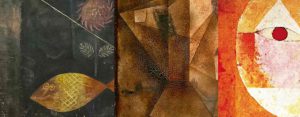Surrealism art started largely due to Dada Movement aftermath of WW 1. In 1920’s a cultural movement began best known for its Visual artworks and writing. Artists painted unnerving, illogical scenes with photographic precisions, created strange creature from everyday objects, and developed painting technique that allowed the unconscious to express itself. In another words Surrealism art began as a philosophical movement that said the way to find truth in the world was through the subconscious mind and dreams, rather than through logical thought. The movement included many artists, poets, and writers who expressed their theories in their work.
History of Surrealism Art
Surrealism grew out of the Dada movement, which was also in rebellion against middle-class complacency. Artistic influences, however, came from many different sources. The most immediate influence for several of the Surrealists was Giorgio de Chirico, their contemporary who, like them, used bizarre imagery with unsettling juxtapositions. They were also drawn to artists from the recent past who were interested in primitivism, the naive, or fantastical imagery, such as Gustave Moreau and Henri Rousseau. Even artists from as far back as the Renaissance, such as Giuseppe Arcimboldo and Hieronymous Bosch, provided inspiration in so far as these artists were not overly concerned with aesthetic issues involving line and color, but instead felt compelled to create what Surrealists thought of as the “real.”
Breton’s 1924 Surrealist Manifesto defines the purposes of Surrealism. He included citations of the influences on Surrealism, examples of Surrealist works, and discussion of Surrealist automatism. He provided the following definitions:
“Surrealism, n. Pure psychic automatism, by which one proposes to express, either verbally, in writing, or by any other manner, the real functioning of thought. Dictation of thought in the absence of all control exercised by reason, outside of all aesthetic and moral preoccupation.”
Sigmund Freud‘s work placed emphasis on the subconscious mind, and its role in steering behaviour and emotion. His way of using free association, and dream analysis to get a clue to the subconscious was picked up by the surrealists. They painted dreamlike fantasies, and practised automatic drawing without sight: ‘automatism’.
Surrealism works have an element of surprise: unexpected items are placed next to each other for no clear reason. Many Surrealist artists and writers see their work as an expression of the philosophical movement first and foremost. The works are an artifact, and André Breton said that Surrealism was above all a revolutionary movement.
Fun Facts of Surrealist Movement
- Surrealism was influenced by other movements and modes of thought. Its proponents were inspired by the theories and dream studies of the psychoanalyst Sigmund Freud.
- The movement owes its roots to the Dadaism movement, which was established the decade before. Surrealism also emphasised positive expression, as opposed to Dadaism’s nihilistic negative expression.
- Surrealist writers were at first hesitant about letting visual artists into the movement. The Surrealists feared that the labor that went into producing a work of visual art contradicted spontaneity of expression.
- The movement gave birth to a number of techniques in the visual arts. frottage, which is placing a sheet of paper over a grained or textured surface and rubbing it over it with pencil or crayon, practiced by the German painter Max Ernst.
- Surrealism grew highly political. Andre Breton’s hope of freeing the ordinary person from society’s rationalism for the sake of a Marxist revolution was so influential in the group that the membership in the movement ended up being dependent on Breton’s whims.
- The movement was accused of being sexist.
Surrealism as an organised movement died at the onset of World War II, which forced many of its proponents to flee to the United States to avoid persecution. However, this only served to give the movement a new lease on life in the late 30s and 40s. Today, the surrealist aesthetic lives on in many works of art and even in pop culture.




